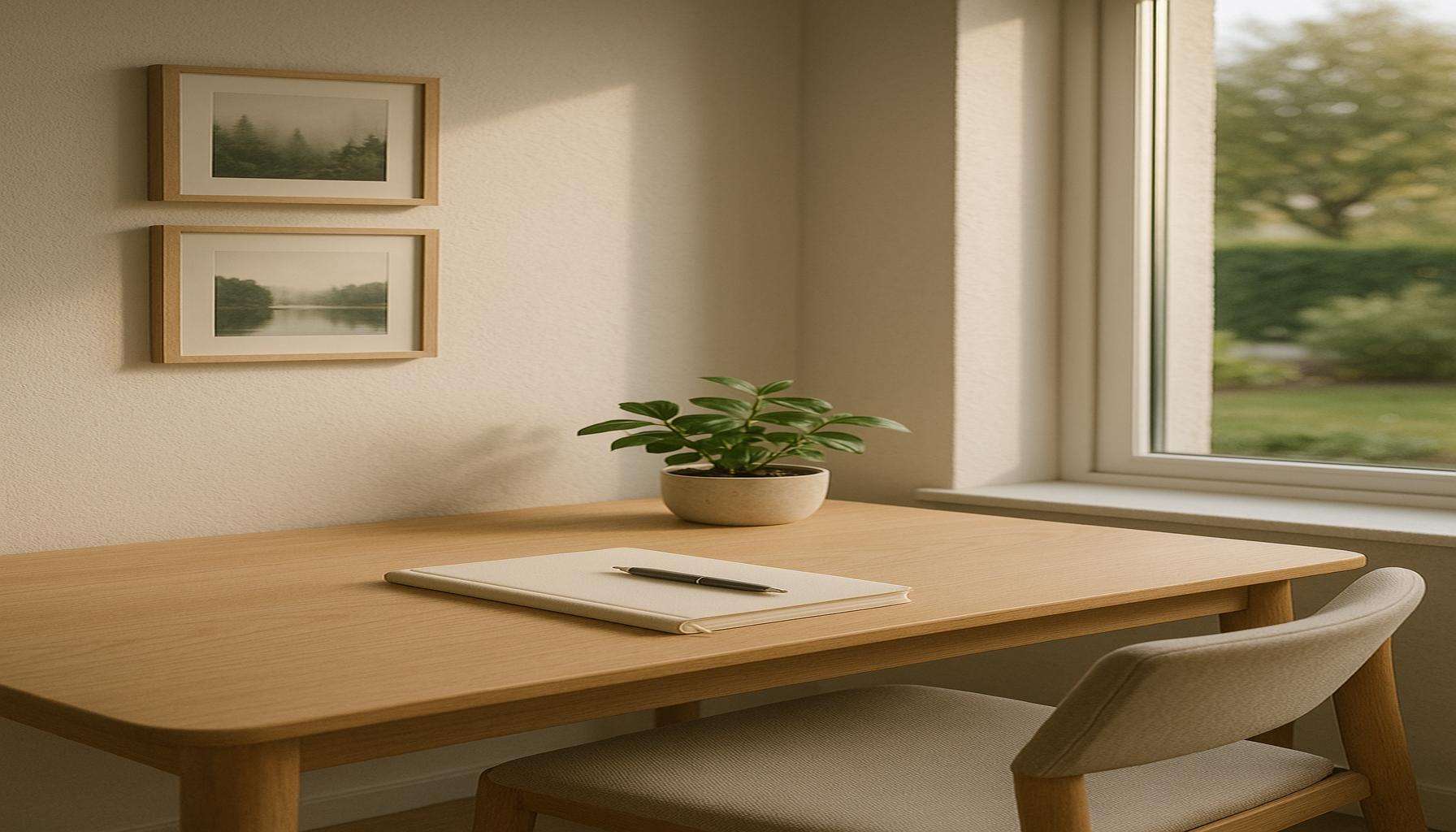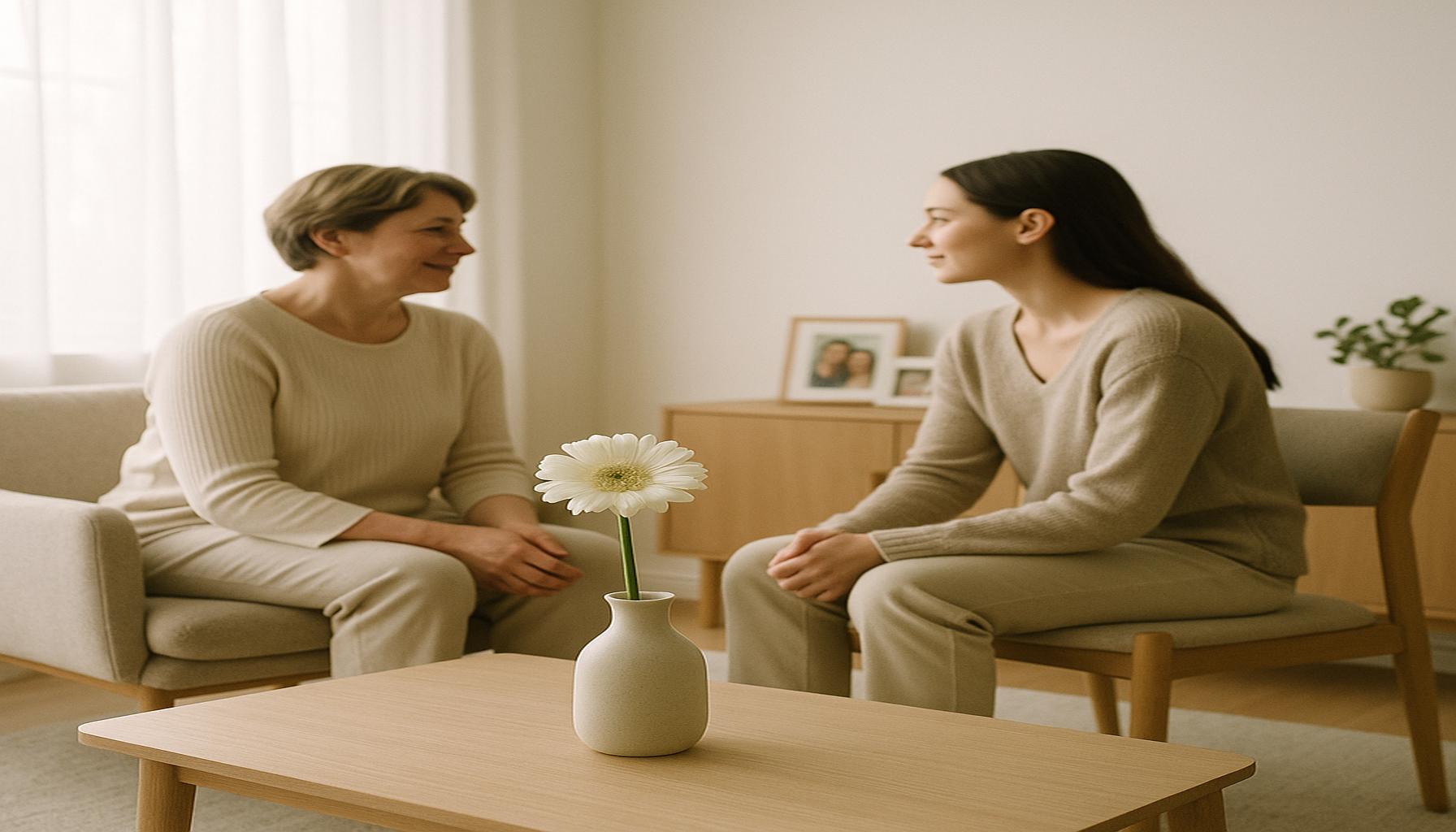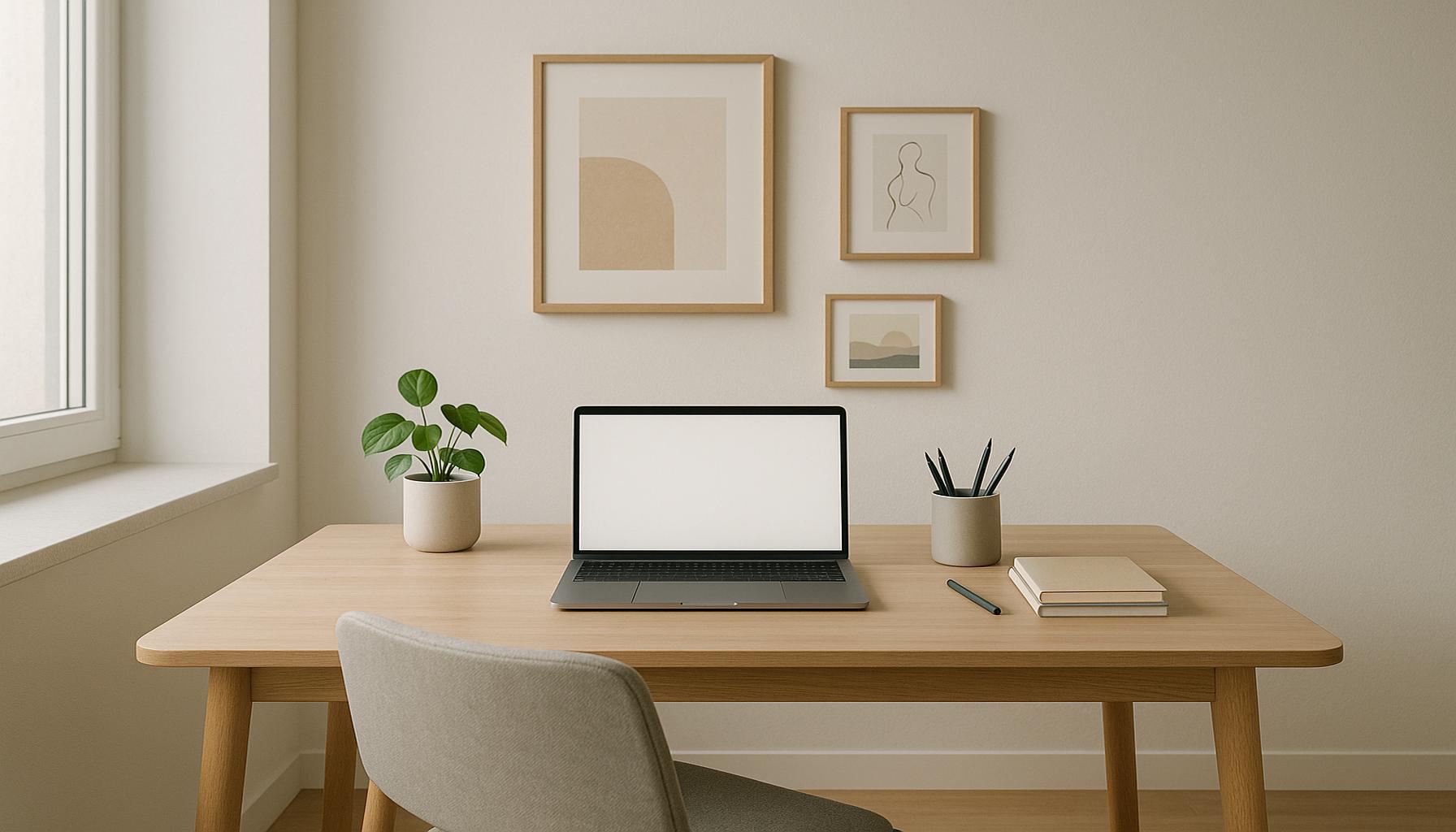Intentionality in Space Creation: How Minimalism Can Transform Your Environment into a Refuge of Clarity
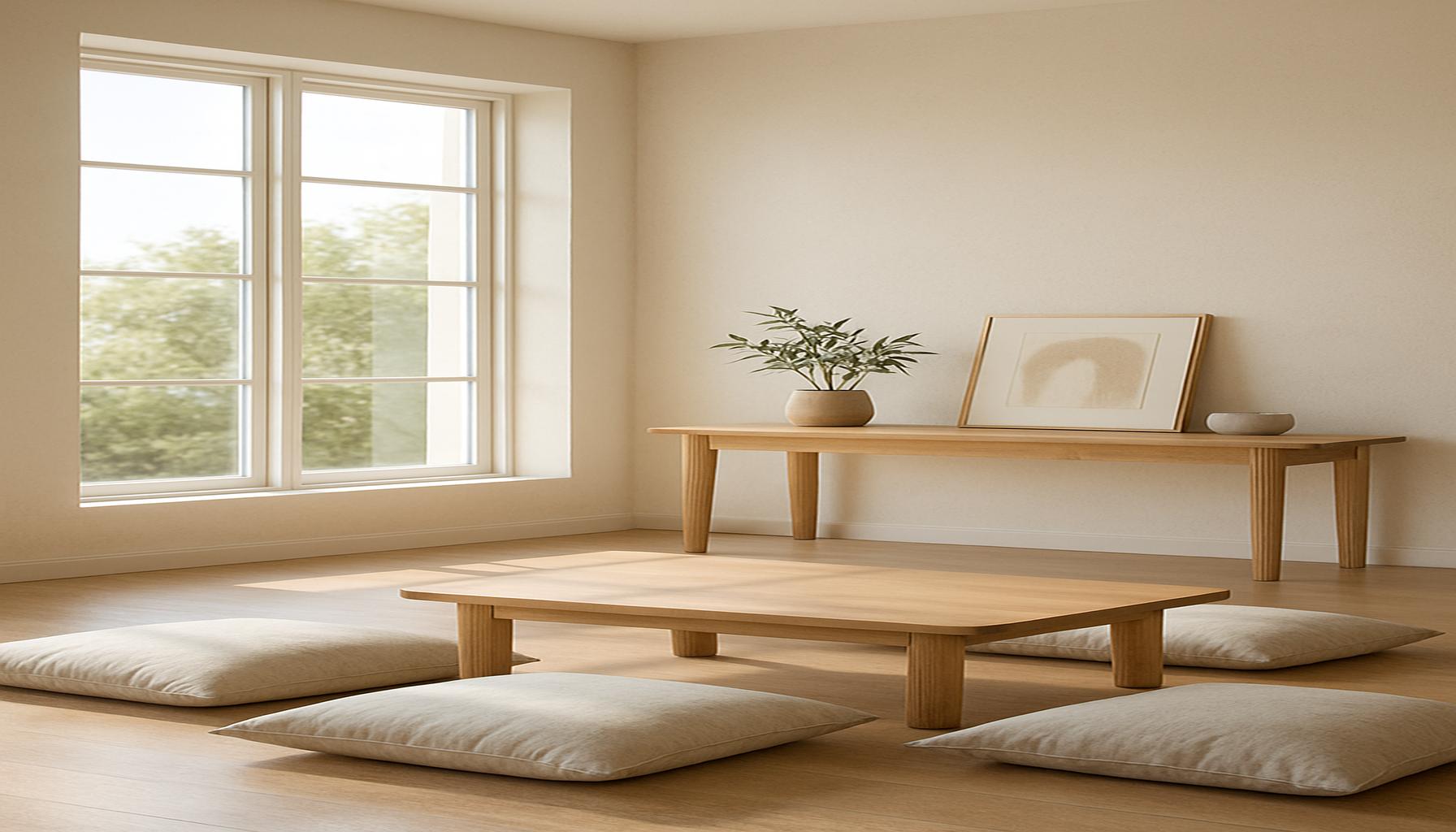
Creating Intentional Spaces
In today’s fast-paced world, our living environments often become cluttered and overwhelming. The concept of minimalism invites a fresh perspective: transforming spaces into sanctuaries of calm and clarity. By embracing intentionality in space creation, we can shift from chaos to serenity, ultimately enhancing our quality of life.
Why Choose Minimalism?
Minimalism isn’t just about eliminating possessions; it’s about curating your surroundings with intention and purpose. The philosophy encourages you to evaluate what truly matters, leading to a more fulfilling life. Consider these compelling benefits:
- Enhanced Focus: A clean, organized environment reduces distractions. For instance, a workspace devoid of unnecessary items can help you concentrate better on tasks at hand, making it easier to meet deadlines and produce high-quality work.
- Increased Productivity: A streamlined space allows for better workflow. Take the kitchen, for example: a decluttered countertop encourages meal prep without the stress of navigating around a pile of seldom-used appliances.
- Improved Well-being: Spaces designed with intention can elevate your mood and reduce stress. Research suggests that individuals living in minimalist environments report lower levels of anxiety, as fewer visual distractions can lead to a more peaceful mental state.
Key Elements of a Minimalist Space
Intentionality in design revolves around specific principles that are not only visually appealing but also functional and enriching:
- Functionality: Every item serves a purpose. This principle means evaluating your belongings and keeping only those that fulfill a practical role or bring you joy, which can vastly improve your daily interactions within the space.
- Neutral Color Palettes: Calming hues, such as soft grays, whites, and beiges, create a peaceful atmosphere, making your home feel more open and inviting. This can be particularly effective in a living room or bedroom, where relaxation is crucial.
- Open Layouts: Space to breathe and move freely enhances clarity. An open layout not only creates a sense of flow but also allows natural light to fill the area, improving mood and energy levels throughout the day.
Exploring these elements leads to a transformative experience where your environment becomes more than a physical space—it evolves into a refuge of clarity. The process may involve some effort and consideration, but the results are worth it. Imagine a home that feels refreshing and invigorating, beckoning you to retreat after a long day. Join us as we delve deeper into how minimalism can reshape your world and bring intentionality to your life, ultimately leading you toward tranquility and fulfillment.
DISCOVER MORE: Click here to uncover the secrets of decluttering
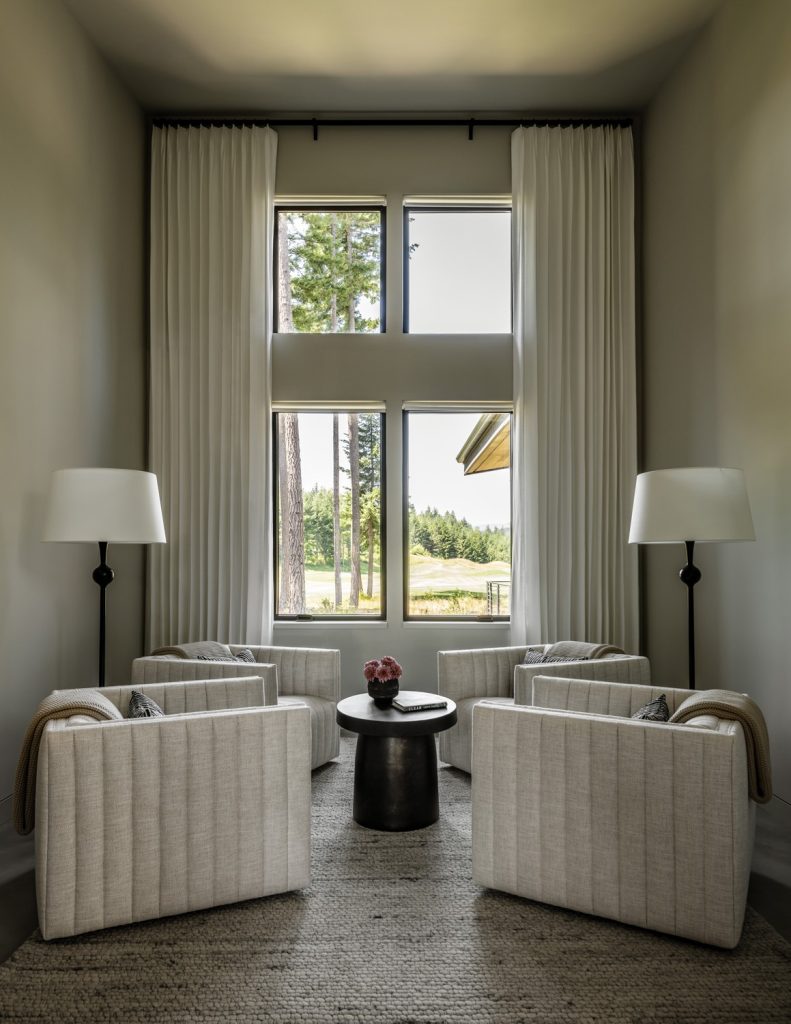
Embracing Intentionality in Every Detail
Creating a minimalist space requires a thoughtful approach that goes beyond merely clearing out possessions. It is about fostering an environment that enhances mindfulness and intentional living. To achieve this, self-reflection is paramount. Begin by asking yourself questions about your current surroundings: What items do you reach for daily? What makes you feel calm and collected? By identifying the essentials, you can curate a space that resonates with your individual needs and preferences.
Practical Steps to Minimalism
Transitioning to a minimalist lifestyle involves more than just decluttering; it’s about adopting practical strategies that support an intentional living space. Here are some actionable steps to consider:
- Declutter Room by Room: Start in one area, such as the bedroom or living room, and methodically sift through your belongings. Ask yourself whether each item serves a purpose or sparks joy. If not, consider donating or selling it.
- Prioritize Quality Over Quantity: Invest in high-quality items that will last, rather than a collection of cheaper alternatives. Durable furniture and decor create a sense of coherence and permanence within your space.
- Establish Routines: Implement daily routines that encourage tidiness. A quick evening tidy-up can prevent clutter from accumulating and ensure your space remains a tranquil retreat.
- Incorporate Mindful Decor: Choose decor that is meaningful and aesthetic, such as art pieces or plants that inspire relaxation and balance. These elements contribute not just visually but also emotionally to the ambiance of your space.
By embracing these steps, you pave the way for a space that doesn’t just look minimal but feels inviting and energizing. It’s essential to recognize that minimalism is a journey rather than a destination. As you navigate this path, allow yourself the flexibility to adjust and experiment with your space until it reflects your evolving understanding of what clarity and tranquility mean to you.
The Role of Nature in Minimalist Design
Incorporating natural elements can significantly enhance the intentionality of your space. Biophilic design, which integrates nature into our built environments, has been shown to reduce stress and enhance focus. Consider bringing in indoor plants, natural light sources, or incorporating elements like wood and stone into your decor. These additions promote a sense of calm and can transform your environment into a refuge of clarity.
As we continue to explore the profound impacts of minimalism, you will begin to see how these essential components work together harmoniously. This alignment not only clears away the physical clutter but also provides mental liberation, allowing clarity to thrive in your personal sanctuary.
| Advantage | Description |
|---|---|
| Enhanced Well-being | Minimalism promotes tranquility by reducing clutter, which can alleviate stress and increase mental clarity. |
| Increased Focus | A minimalist environment enhances concentration by limiting distractions, thereby improving productivity in daily tasks. |
| Intentional Design | Every piece in a minimalist space serves a purpose, creating an intentional atmosphere that fosters creativity and inspiration. |
| Sustainable Living | Minimalism encourages mindful consumption, leading to an eco-friendly lifestyle by reducing waste and promoting sustainable practices. |
In this exploration of intentionality in space creation, minimalism emerges as a powerful tool for establishing a haven that reflects clarity and focus. By embracing a minimalist approach, individuals can transform their environments into nurturing spaces that not only enhance well-being but also promote a sustainable lifestyle. The connection between the physical environment and mental state is profound; thus, a careful selection of items and intentions behind each piece can significantly impact personal clarity and creativity. As the world becomes increasingly chaotic, minimalist spaces offer a refuge where simplicity reigns, allowing room for what truly matters. Each advantage outlined reflects the holistic benefits of integrating minimalism into one’s life, underscoring its role as a catalyst for change in our surroundings.
DISCOVER MORE: Click here to transform your space
The Emotional Benefits of a Minimalist Environment
Beyond the aesthetic appeal, minimalism offers profound emotional benefits that contribute to a sense of well-being. Psychology research has demonstrated that clutter can negatively impact cognitive function and overall mental health. For instance, a study from Stanford University revealed that individuals living in cluttered homes experience higher levels of stress. By actively reducing clutter, you can cultivate an environment that supports emotional clarity and tranquility.
Decluttering and Mental Health
The process of decluttering serves as both a physical and emotional release. As individuals clear their surroundings, they often find that the act of letting go of material possessions helps them untangle emotional attachments and mental clutter as well. This clearing aligns closely with practices such as mindfulness meditation, where individuals learn to focus on the present moment. The parallels between these two activities highlight how removing unnecessary items can lead to a more centered and present way of living.
Designing Purposeful Spaces
Intentional design goes hand in hand with minimalism, allowing you to shape areas that serve specific functions. For instance, transforming a corner of your living room into a cozy reading nook featuring a single armchair, a simple side table, and a lamp can create a purposeful, inviting space dedicated to relaxation and reflection. In a survey conducted by the American Psychological Association, respondents reported that designated spaces for activities like reading or meditation significantly improved their capacity to unwind and recharge.
- Utilize Multi-Functional Furniture: Invest in pieces that serve multiple purposes, such as a coffee table with storage or a sofa bed. This not only frees up space but also elevates the functionality of your environment.
- Curate Your Surroundings: Limit wall art to just a few pieces that resonate profoundly with you, rather than filling every wall with decor. A carefully chosen piece can become a focal point that enhances the room’s emotional atmosphere.
- Zone Your Space: Designate specific areas for various activities—work, relaxation, creation—ensuring each zone is conducive to its purpose. This intentional division encourages focus and clarity, reducing the overwhelming sensation often associated with multitasking.
Furthermore, research from the Environmental Protection Agency emphasizes the importance of indoor air quality in relation to mental clarity. A minimalist approach encourages fewer items that collect dust and a focus on natural materials that promote a healthier living environment. Integrating proper ventilation and natural light into your space not only enhances clarity but also contributes to your overall health.
Fostering Connection Through Simplicity
A minimalist environment serves as a backdrop for both personal and relational growth. By reducing distractions and creating serene surroundings, you open the door for deeper connections with family and friends. Gatherings can take on a more meaningful quality when they take place in a serene, thoughtfully curated environment, encouraging more profound conversations and shared experiences.
As you explore the multifaceted layers of intentionality in space creation, you will discover a new dimension of living that promotes psychological clarity and well-being. Through your commitment to minimalism, your environment evolves into a sanctuary, inviting you to engage more deeply with both yourself and those around you.
DIVE DEEPER: Click here to discover simple strategies for efficient living
Conclusion
In an age where distractions abound, intentionally creating minimalist spaces has emerged as a vital practice for fostering clarity and emotional well-being. Minimalism is not merely about aesthetic choices; it is a transformative mindset that empowers individuals to reclaim their environments and enhance their quality of life. By embracing the principles of intentionality, you can cultivate spaces that promote serenity, focus, and emotional connectedness.
The emotional benefits of a well-designed minimalist environment are profoundly supported by research; studies demonstrate that decluttering can significantly reduce stress and improve mental clarity. This powerful transformation occurs as individuals let go of physical and emotional baggage, fostering a clear mind and an increased capacity for mindfulness. Simple adjustments, such as incorporating multi-functional furniture and creating designated zones for various activities, help establish purposeful spaces that cater to your needs.
Furthermore, as you curate your surroundings with intention, you not only enhance your personal space but also create an inviting backdrop for meaningful relationships and connections. A serene environment encourages deeper conversations and shared experiences that enrich our lives.
Ultimately, the journey towards minimalism is a personal one, inviting each individual to explore their relationship with their environment. Whether you aim to transform your home into a refuge of clarity or simply seek to reduce overwhelm, adopting a minimalist approach can pave the way for a life filled with intention, peace, and connection.
